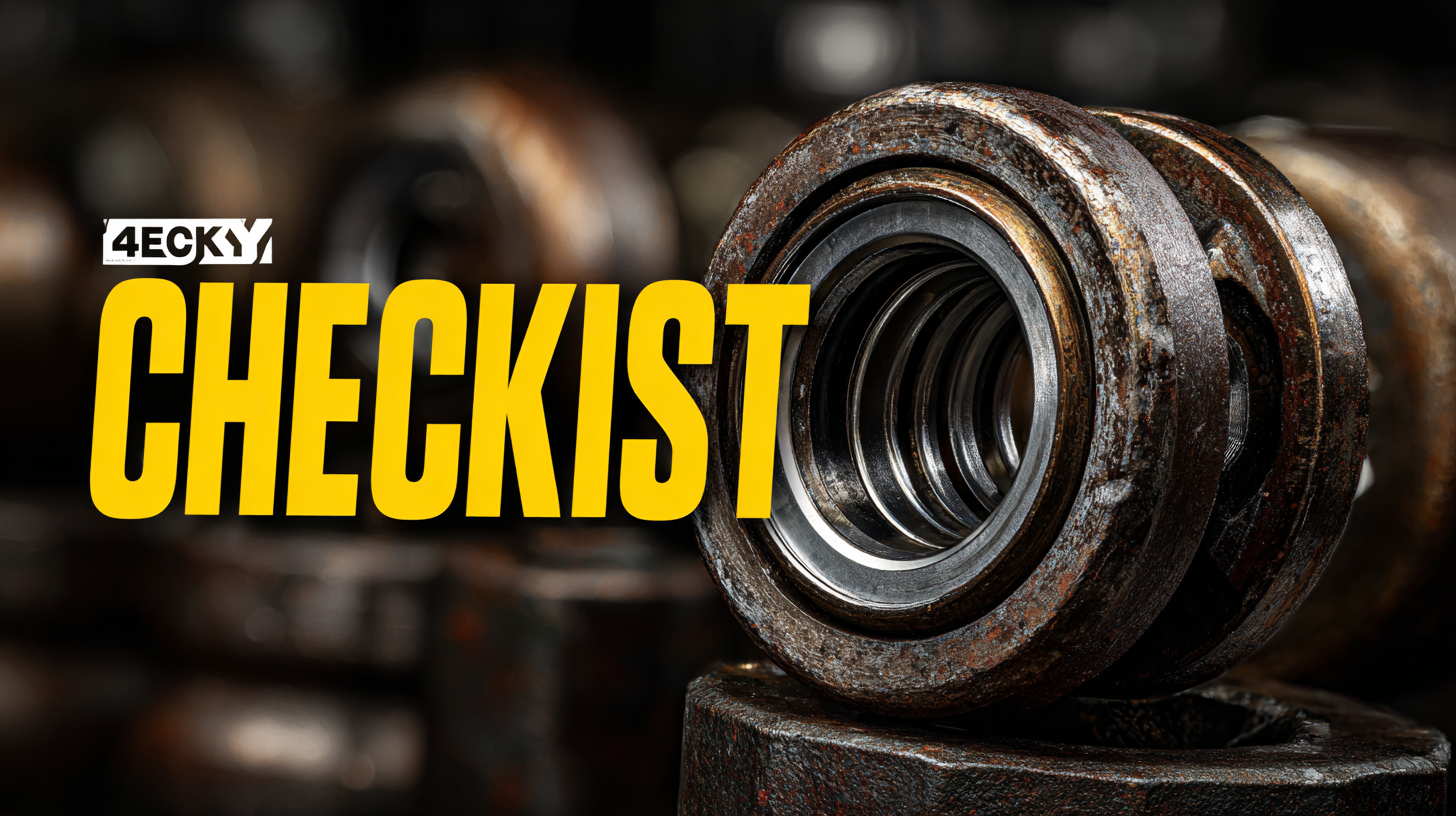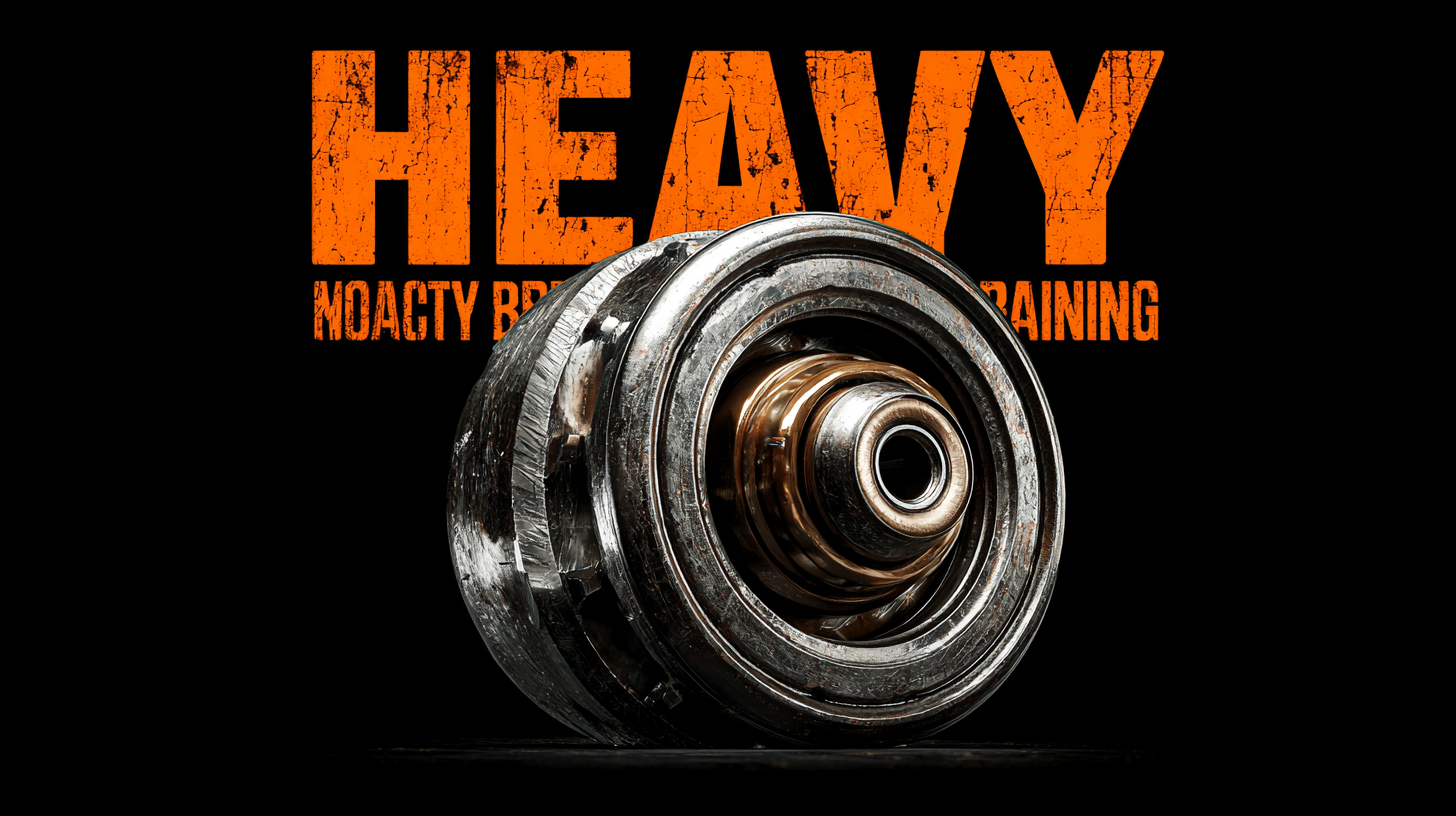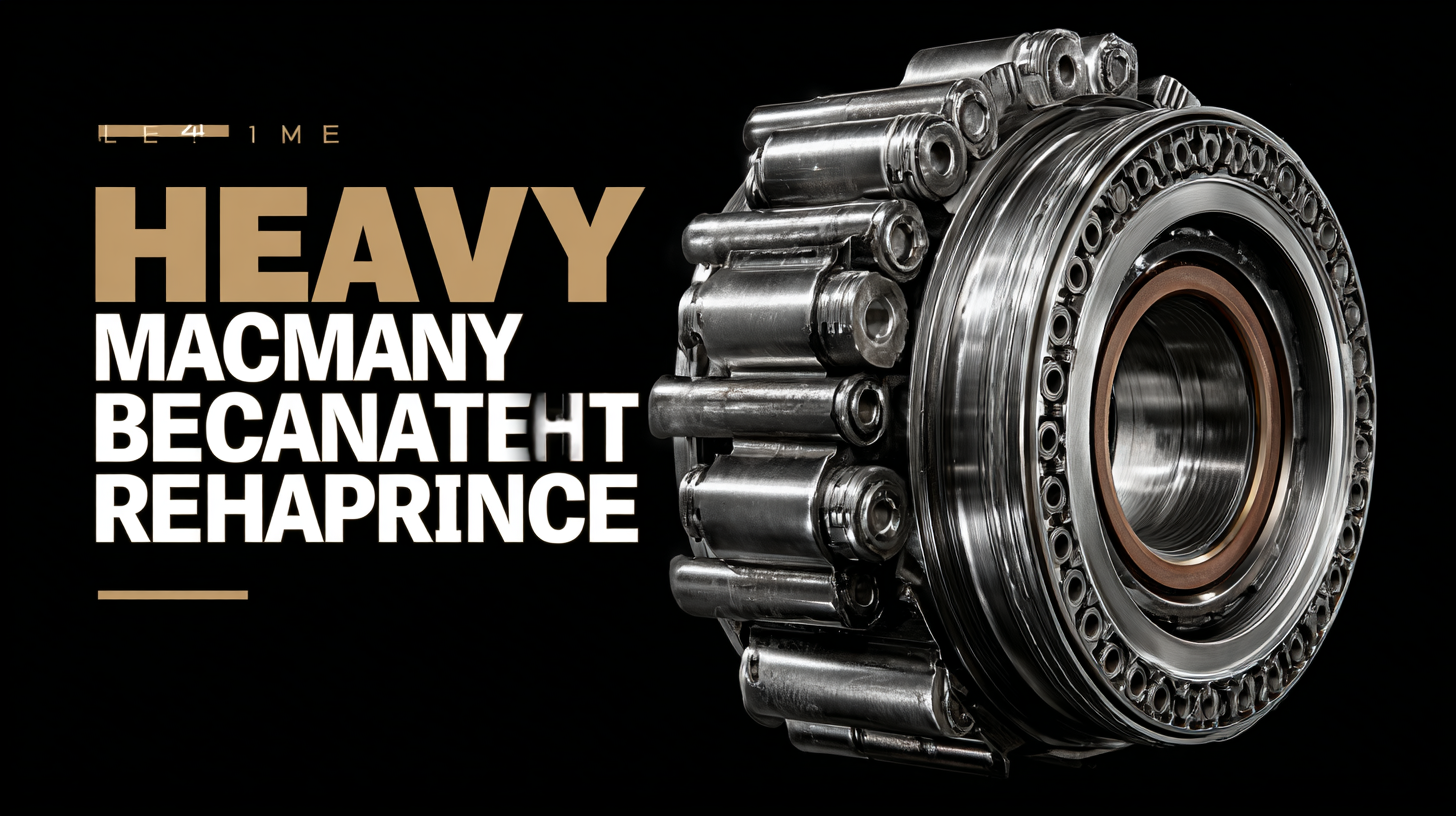Ultimate Checklist for Selecting the Right Heavy Machinery Bearing Replacement
In the world of heavy machinery, the selection of appropriate bearings plays a crucial role in ensuring operational efficiency and longevity. According to a report by Research and Markets, the global industrial bearings market is projected to reach USD 100 billion by 2025, driven by advancements in technology and the increasing demand for heavy-duty equipment. This underscores the importance of making informed decisions in bearing replacements. The "Heavy Machinery Bearing Replacement Guide" serves as a vital resource for industry professionals, providing a comprehensive checklist that outlines key considerations such as load capacity, material selection, and environmental factors. By adhering to these guidelines, businesses can minimize downtime and enhance productivity, ultimately leading to a more profitable operation in an ever-competitive marketplace.
Key Factors to Consider When Selecting Heavy Machinery Bearings
 When selecting heavy machinery bearings, several key factors must be considered to ensure optimal performance and longevity. First and foremost, understanding the operational conditions is crucial. This includes evaluating load capacities, speed requirements, and the type of motion involved in the machinery. Bearings are designed for specific applications, and selecting one that aligns with these conditions can substantially reduce wear and tear, ultimately minimizing downtime and repair costs.
When selecting heavy machinery bearings, several key factors must be considered to ensure optimal performance and longevity. First and foremost, understanding the operational conditions is crucial. This includes evaluating load capacities, speed requirements, and the type of motion involved in the machinery. Bearings are designed for specific applications, and selecting one that aligns with these conditions can substantially reduce wear and tear, ultimately minimizing downtime and repair costs.
Another important factor is the material composition of the bearings. Different materials, such as steel, ceramics, and polymers, offer various benefits in terms of strength, durability, and resistance to corrosion and extreme temperatures. Conducting a thorough analysis of the work environment can help determine the most suitable material. Additionally, it is vital to assess the bearing's sealing arrangements, as effective sealing can protect against contaminants and prolong the bearing life.
Lastly, the level of maintenance required for different bearing types should not be overlooked. Some bearings come with built-in lubrication systems, while others may demand regular servicing. Choosing a bearing that harmonizes with your maintenance capabilities can further optimize operational efficiency. By prioritizing these factors, selecting the right heavy machinery bearings can lead to enhanced productivity and reduced operational costs.
Understanding Different Types of Heavy Machinery Bearings Available
When it comes to heavy machinery, selecting the appropriate bearing replacement is crucial for optimal performance and reliability. Heavy machinery bearings come in a variety of types, each tailored to specific operational demands. The most common types include roller bearings, ball bearings, and tapered roller bearings, each providing unique advantages.
 Roller bearings, for instance, can handle heavy loads and are ideal for applications like excavators and bulldozers. According to the "Heavy Equipment Bearing Market Analysis" report by MarketsandMarkets, the global bearing market for heavy machinery is projected to reach $3.5 billion by 2026, driven by the increasing demand for performance and efficiency in construction and mining sectors.
Roller bearings, for instance, can handle heavy loads and are ideal for applications like excavators and bulldozers. According to the "Heavy Equipment Bearing Market Analysis" report by MarketsandMarkets, the global bearing market for heavy machinery is projected to reach $3.5 billion by 2026, driven by the increasing demand for performance and efficiency in construction and mining sectors.
Ball bearings offer lower friction and are suitable for high-speed applications. They are often used in smaller, precision-driven machinery. Tapered roller bearings, on the other hand, excel in applications involving both radial and axial loads—making them indispensable in heavy-duty machinery like trucks and off-highway vehicles. A report by Technavio indicates that the increasing adoption of automated machinery is further boosting the demand for high-quality bearing solutions, emphasizing the importance of choosing the right type tailored to specific equipment needs. Understanding the distinctions between these bearing types is essential for maximizing machinery lifespan and maintaining operational efficiency.
Impact of Material Selection on Bearing Performance and Longevity
When selecting bearings for heavy machinery, the choice of material is crucial for ensuring optimal performance and longevity. Different materials offer distinct characteristics that can significantly affect how well the bearing operates under varying loads and environmental conditions. For instance, steel bearings are known for their strength and wear resistance, making them suitable for high-load applications. In contrast, ceramic bearings, while lighter and resistant to corrosion, may not withstand heavy stresses as effectively. Understanding the specific operational demands of your machinery is essential when evaluating which material will provide the best performance.
Moreover, the environment in which the machinery operates plays a pivotal role in material selection. Bearings used in high-temperature or abrasive environments need materials that can withstand extreme conditions without failing. For example, bearings made from specialized polymers or coatings may be ideal in corrosive environments, ensuring durability and reducing maintenance costs. Thus, a thoughtful consideration of material properties, such as hardness, thermal conductivity, and resistance to environmental factors, will contribute to the bearing's overall efficiency and lifespan, ultimately enhancing the performance of the heavy machinery it supports.
Impact of Material Selection on Bearing Performance and Longevity
Market Trends and Innovations in Heavy Machinery Bearing Technology
In recent years, the heavy machinery bearing sector has witnessed significant market trends, largely driven by advancements in material sciences and engineering technologies. Manufacturers are now focusing on the development of high-performance bearings that offer improved load capacity, reduced friction, and enhanced durability.
For example, the introduction of composite materials and advanced lubricants has allowed for bearings that withstand harsher operating conditions, extending the lifespan of heavy machinery and reducing maintenance costs.
Moreover, the trend towards automation and smart machinery is influencing bearing technology as well. The integration of IoT sensors within bearings facilitates real-time monitoring of performance, enabling predictive maintenance and minimizing unexpected breakdowns.
This innovation not only enhances operational efficiency but also promotes safety in heavy machinery operations. As these trends continue to evolve, selecting the right heavy machinery bearing replacement requires careful consideration of these technological advancements to ensure optimal performance and longevity in demanding industrial environments.
Cost-Benefit Analysis: Investing in Quality Bearings for Your Machinery
When considering bearing replacements for heavy machinery, a comprehensive cost-benefit analysis is crucial for making an informed investment. As the ball bearing market experiences significant growth, projected to achieve a CAGR of over 7.34% from 2025 to 2032 and reach an estimated USD 14.89 billion by 2032, the focus on investing in quality bearings becomes increasingly important. These projections highlight the rising demand for durable and efficient bearings in various industrial applications.
Investing in high-quality bearings can lead to numerous advantages, including enhanced machinery performance, reduced downtime, and lower maintenance costs. While the initial investment may be higher, the potential long-term savings through increased reliability and efficiency often outweigh the costs. Industries are now recognizing that poor-quality bearings can lead to more frequent replacements and increased operational disruptions.
Therefore, by choosing quality over cost in bearing selection, businesses can foster a sustainable and productive operational environment and align themselves with the projected market growth.

Home
Products
Industrial Bearings
Deep Groove Ball Bearings
Self-Aligning Ball Bearings
Angular Contact Ball Bearings
Cylindrical Roller Bearings
Taper Roller Bearings
Spherical Roller Bearings
Bearing housing or Accessories
Miniature Bearing
Thrust ball bearing
Radial Spherical Plain Bearing
Pillow Block Bearing
Needle Roller Bearings
Automotive Bearings
Agricultural Bearings
Special Material Bearings
Industry Application
About Us
News
Contact Us




 When selecting heavy machinery bearings, several key factors must be considered to ensure optimal performance and longevity. First and foremost, understanding the operational conditions is crucial. This includes evaluating load capacities, speed requirements, and the type of motion involved in the machinery. Bearings are designed for specific applications, and selecting one that aligns with these conditions can substantially reduce wear and tear, ultimately minimizing downtime and repair costs.
When selecting heavy machinery bearings, several key factors must be considered to ensure optimal performance and longevity. First and foremost, understanding the operational conditions is crucial. This includes evaluating load capacities, speed requirements, and the type of motion involved in the machinery. Bearings are designed for specific applications, and selecting one that aligns with these conditions can substantially reduce wear and tear, ultimately minimizing downtime and repair costs.
